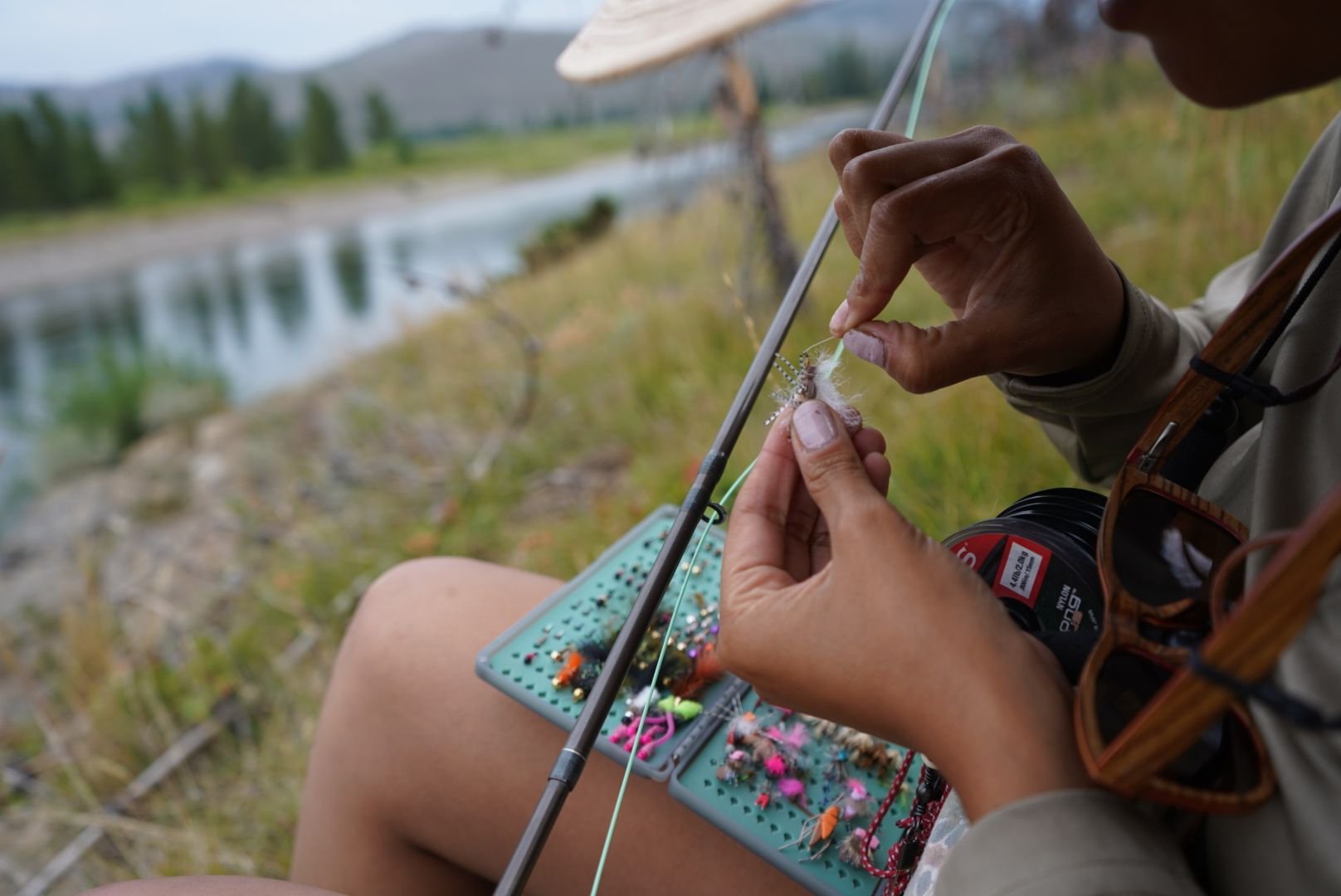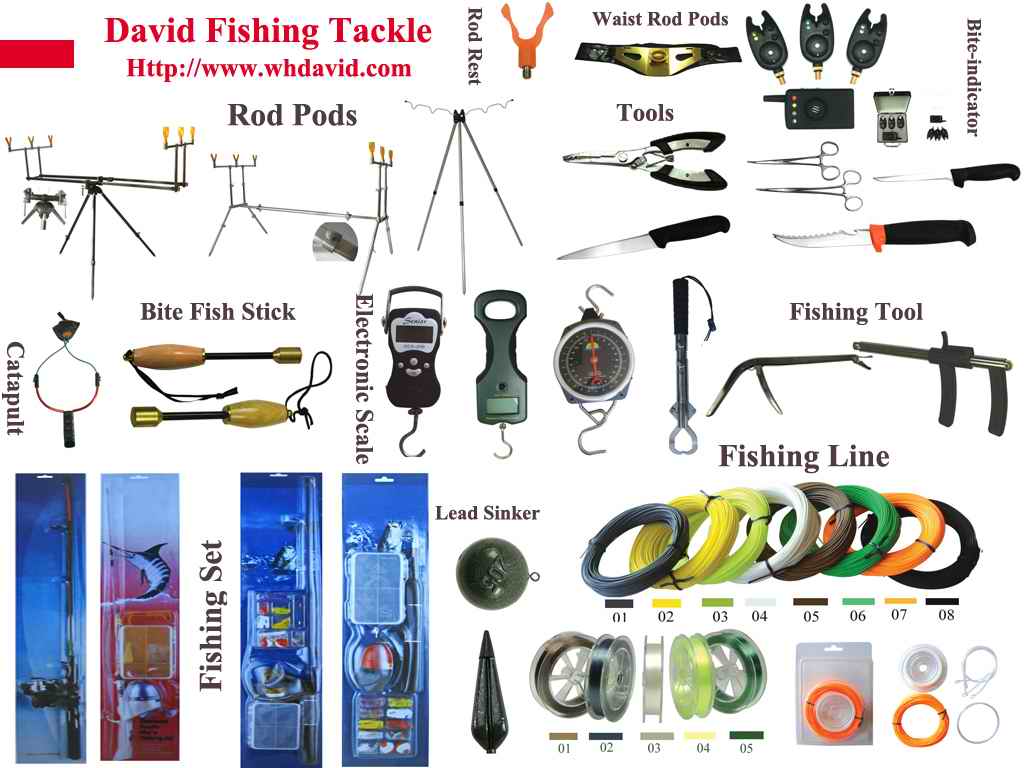The Full Guide to Fishing Fishing: Baits, Tackle, and Fly Fishing Basics for All Skill Degrees
The Full Overview to Fishing Fishing provides a substantial look at important gear for fishermens at any level. It covers numerous lures, tackle components, and fly fishing fundamentals. Understanding these aspects is vital for a successful fishing experience. The overview likewise emphasizes the relevance of seasonal strategies and proper gear upkeep. As fishermens browse their choices, they might ask yourself which particular products will truly boost their angling experiences.
Comprehending Various Sorts Of Fishing Baits
A variety of angling baits exist, each created to draw in specific types of fish. All-natural lures, such as worms, minnows, and pests, resemble the fish's natural diet plan, making them efficient for numerous species. Nightcrawlers are prominent for fresh water fishing, while minnows attract in bigger fish like bass and pike.
Synthetic lures, including lures and jigs, are crafted to imitate the activity and appearance of prey. These can range from vibrantly tinted plastic worms to practical crankbaits designed to resemble swimming fish.
An additional category is scent-based lures, which make use of odors to draw in fish from a range. These baits are especially helpful in dirty waters.
Ultimately, the option of lure depends upon the target varieties, water problems, and angling technique, making it vital for fishermens to understand their choices and select the very best bait for their details angling circumstance.
Important Fishing Tackle: Rods, Reels, and Lines
While picking the right angling take on, recognizing the interaction between poles, reels, and lines is essential for successful angling. Fishing rods come in different sizes and activities, each designed for certain fishing strategies and varieties. A shorter pole supplies better control for close-in fishing, while longer rods enable greater spreading range.
Reels, readily available in rotating, baitcasting, and fly options, should match the rod and line type to assure smooth operation. The option of reel significantly impacts the angler's capability to get catches effectively.
Lines, classified by product and toughness, work as the connection between the fish and the pole. Monofilament, fluorocarbon, and braided lines each deal special advantages, affecting presence and level of sensitivity. Picking the ideal combination of line, rod, and reel is important, as it directly affects spreading performance, level of sensitivity to bites, and total angling success. Each component has to function harmoniously to boost the angling experience.
Selecting the Right Fishing Lures for Your Target Types
Selecting the suitable angling entices calls for an eager understanding of the preferences of target types - Xplorer Fly Fishing. Factors such as water problems and local forage play a substantial role in figuring out which entices will be most reliable. By aligning appeal option with these variables, anglers can boost their opportunities of success on the water
Comprehending Species Preferences
Picking the best angling lures calls for an understanding of the details choices of target varieties, as different fish are brought in to differing dimensions, movements, and colors. Bass are commonly drawn to intense, flashy attractions that imitate their all-natural target, while trout might choose much more refined, all-natural colors. Furthermore, the size of the lure should match the dimension of the fish being targeted; bigger types commonly react far better to larger lures. Activity additionally plays an important function; some fish are drawn in to attractions that resemble erratic habits, while others prefer a consistent, smooth retrieve. By recognizing these preferences, fishermens can properly raise their chances of an effective catch, tailoring their deal with to the one-of-a-kind attributes of each varieties.
Matching Lures to Problems
The effectiveness of fishing appeals frequently depends upon the dominating environmental problems. Fishermens should consider factors such as water temperature, clearness, and current when choosing the suitable lure. In murky waters, brilliant or loud lures have a tendency to attract focus, while in clear problems, more subtle motions and all-natural shades are reliable. Seasonal changes also play an important duty; throughout spawning periods, fish may respond better to lures mimicking their target. In addition, time of day influences fish task; dawn and dusk are prime times for utilizing topwater lures. Eventually, understanding these problems allows anglers to match their lures to the target species, boosting their possibilities of an effective catch. Knowledge of ecological characteristics is vital to reliable appeal choice.
The Fundamentals of Fly Fishing Equipment
A solid understanding of fly angling gear is crucial for both novices and skilled fishermens alike. The basic components of fly angling equipment include the fishing pole, reel, line, and flies. The fishing pole, commonly longer and a lot more adaptable than standard fishing rods, enables for specific spreading. Choosing the ideal rod depends upon the fishing atmosphere and target varieties.
The reel, developed to hold the fly line, plays a significant role in managing line access and drag. Fly lines are specialized for various techniques, from drifting to sinking, and have to be matched to the pole's requirements.
Finally, flies imitate marine insects and bait fish, and be available in numerous styles such as completely my website dry flies, fairies, and streamers. Choosing the proper fly is crucial, as it needs to match to the local fish species and conditions. Mastery of these basic elements develops the structure for effective fly fishing experiences.
Tips for Organizing Your Fishing Tackle Box
Organizing an angling deal with box can significantly boost an angler's performance on the water. By sorting deal with by kind, making use of containers efficiently, and labeling whatever clearly, anglers can rapidly access their equipment. These strategies not only conserve time however also assure that necessary products are constantly handy when required.

Sort by Kind
Arranging tackle by type guarantees that anglers can swiftly locate the gear they need when the excellent fishing opportunity emerges. Organizing things such as hooks, lures, and sinkers right into assigned areas improves performance and reduces stress throughout getaways. Classifying lures by type-- online, man-made, or frozen-- permits for swift choices based on angling conditions. Tackle boxes can be separated into compartments for easy access to particular gear, such as fly fishing basics or saltwater equipment. This method not just conserves time however likewise helps in preserving the problem of the tackle, ensuring every little thing stays in perfect shape. By implementing this arranged method, anglers can focus a lot more on the angling experience instead of looking for misplaced products.

Use Containers Intelligently
Making use of containers properly can significantly improve the organization of an angling take on box. Fishermens ought to contemplate using a range of containers, such as tiny tackle trays, zip-lock bags, and compartmentalized boxes, to divide various sorts of gear. When browsing for certain things yet likewise prevents tangling and damage, this approach not just conserves time. For instance, weights, lures, and hooks can each have marked containers, helping with simple accessibility during angling journeys. Furthermore, clear containers permit for fast visibility of components, simplifying the selection procedure. It is also helpful to contemplate the dimension and shape of containers to maximize area within the deal with box. By executing these organizational methods, fishermens can keep a more pleasurable and reliable angling experience.
Label Every Little Thing Plainly
Clear labeling is essential for keeping an orderly fishing take on box. By clearly marking compartments and containers, fishermens can easily locate specific items, saving time and decreasing frustration throughout fishing expedition. Utilizing water resistant tags guarantees resilience in numerous climate condition. It is suggested to categorize items such as hooks, lures, and line kinds, providing fast accessibility when needed. Furthermore, color-coded tags can boost exposure and organization. Regularly upgrading labels as supplies change aids preserve an effective system. When fishing with others, clear labeling is especially beneficial, permitting easy sharing and understanding of tackle setups. Eventually, a well-organized deal with box with clear tags cultivates a best site more effective and delightful angling experience.
Seasonal Fishing Strategies and Gear Adjustments
As the seasons modification, fishermens have to adapt their approaches and gear to enhance their opportunities of success. In springtime, for example, fish become more energetic as water temperatures climb, triggering fishermens to make use of lighter deal with and lively lures to attract bites. Throughout summer season, the heat presses fish to deeper waters, requiring larger equipment and techniques such as deep-water or trolling jigging.
In fall, as fish get ready for winter months, fishermens should concentrate on locations with bountiful food sources, using larger lures to attract them. Winter season fishing commonly requires customized equipment, consisting of ice angling equipment and warm apparel, as fish become tired in cool water.
Furthermore, modifications in line selection, lure shade, and lure kind are crucial throughout the year (Xplorer Fly Fishing). By remaining in harmony with seasonal patterns and making these equipment modifications, fishermens can improve their effectiveness and take pleasure in a rewarding fishing experience despite the time of year
Maintenance and Look After Your Fishing Equipment
Proper upkeep and look after angling equipment are vital for guaranteeing longevity and top performance. Anglers should on a regular basis evaluate their rods, reels, and lines for indications of wear, such as fraying or corrosion. Cleaning equipment after each fishing expedition is important; freshwater must be made use of to rinse salt and debris, avoiding rust and build-up.
Reels require lubrication to keep smooth procedure; using the suitable oil to relocating components can enhance their life-span. Pole guides must be inspected for cracks or chips, as they can influence spreading and line stability.
Keeping equipment in a dry, temperature-controlled environment helps protect against damages from humidity or severe temperature levels. Furthermore, replacing broken or old tackle, such as hooks and attractions, assurances perfect performance during angling outings. By adhering to these maintenance practices, fishermens can significantly expand the life of their equipment and appreciate a much more effective angling experience.
Often Asked Questions

What Are the Finest Regional Fishing Places for Beginners?
The most effective local angling areas for novices typically include calm lakes, conveniently available rivers, and assigned fishing ponds. Local parks and leisure areas often provide risk-free environments with bountiful fish populaces, making them perfect for beginner fishermens.
Just How Can I Determine Fish Types in My Location?
To recognize fish types in an area, one can observe physical qualities, seek advice from local guidebook, use smart device applications, or involve with neighborhood fishing areas for understandings and recognition pointers specific to the region.
What Licenses Do I Need for Fishing?
To fish legitimately, one normally requires a fishing permit, which differs by region. Additionally, some areas might call for details licenses for sure types or fishing approaches, highlighting the relevance of checking neighborhood laws prior to angling.
Exactly How Do Climate Condition Impact Fishing Success?
Weather significantly affect angling success. Elements such as wind, temperature, and precipitation influence fish behavior, feeding patterns, and environment. Fishermens frequently adjust their techniques based on these conditions to boost their opportunities of a successful catch.
What Prevail Fishing Decorum Rules to Follow?
Usual fishing etiquette policies include valuing others' room, YOURURL.com avoiding sound, tidying up after oneself, complying with regional regulations, and practicing catch and launch when appropriate. These standards cultivate an unified atmosphere for all fishermens.
Fishing poles come in different sizes and activities, each developed for specific fishing techniques and types. A solid understanding of fly angling gear is important for both novices and seasoned fishermens alike. Organizing an angling deal with box can substantially enhance an angler's efficiency on the water. Sorting deal with by type guarantees that fishermens can swiftly situate the gear they require when the perfect angling possibility arises. The best neighborhood angling places for newbies often include tranquil lakes, conveniently accessible rivers, and designated fishing fish ponds.